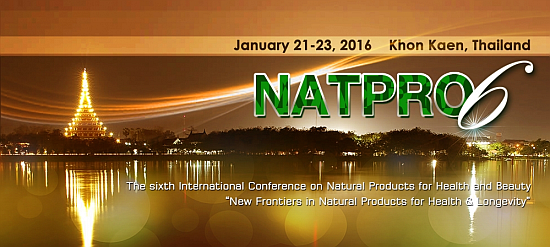Selected Papers from the 6th International Conference on Natural Products for Health and Beauty (NATPRO 6)
A special issue of Molecules (ISSN 1420-3049). This special issue belongs to the section "Natural Products Chemistry".
Deadline for manuscript submissions: closed (20 February 2016) | Viewed by 66060
Special Issue Editors
2. Laboratory of Organic and Pharmaceutical Chemistry, Faculty of Pharmacy, University of Porto, 4050-313 Porto, Portugal
Interests: medicinal chemistry; organic synthesis; heterocycles; P-glycoprotein; anticancer; antimicrobials; chiral drugs; marine natural products
Special Issues, Collections and Topics in MDPI journals
Interests: antibacterial compounds from higher plants; marine invertebrates; soil and marine-derived fungi; cosmetic ingredients from marine resources; natural biopesticides
Special Issues, Collections and Topics in MDPI journals
Interests: biochemical and pharmacological aspect of herbal health products; product prototype development
Special Issue Information
Dear Colleagues,
Throughout the ages, humans have relied on nature for their basic needs for the production of foodstuffs, shelters, clothing, fertilizers, flavors and fragrances, and, certainly not least of all, medicine. The medicinal use of natural products—compounds that are derived from natural sources, such as plants, animals, or micro-organisms—precedes recorded human history, probably by thousands of years. Medicinal plants are also widely used as bioactive raw materials for cosmetics and personal care products. The advance in research and application of Natural Products are owed, to a great extent, to modern chemistry. Analytical and structural chemistry have provided the tools to purify various compounds and to determine their structures, which, in turn, have provided insights into their actions on the human body. On the other hand, the modern tools of chemistry, and biology in particular, the various `-omics’ technologies, now allow scientists to detail the exact nature of the biological effects of natural compounds on the human body, as well as to uncover possible synergies, which holds a great deal of promise for the development of new therapies against many devastating diseases. However, the concept of “medicines of natural origin” should not automatically imply that the remedy will be completely harmless. Many factors contribute to the side-effect profile of a herbal remedy. For exemple, the herb itself may or may not be harmful but when this herb forms part of a herbal product, then the quality of the preparation process plays an important part in product safety. Moreover, plant material can come from a variety of sources, including commercial production horticulture and wild harvest. Thus, regulations like Good Agricultural Practices (GAP), Good Manufacturing Practices (GMP), and Good Clinical Practices (GCP) should be established to guide sustainable sourcing and production of plant material.
This Special Issue of Molecules on “Natural Products for Health and Beauty” welcomes submission of previously unpublished manuscripts from original work on all the above aspects, including the chemistry and biological activity of bioactive compounds, efficacy of Natural Products, Safety and Regulations on Natural Products, Natural Products used in cosmeceuticals and nutraceuticals, health, and beauty product development and innovation, and consumer research. We plan to receive submissions from 30 November 2015 to 20 February 2016.
For more details on NATPRO 6, please click on: http://natpro6.org/home/index.php?l=en

Dr. Anake Kijjoa
Dr. Bungorn Sripanidkulchai
Dr. Maria Emilia de Sousa
Guest Editors
Keywords
- medicinal plants
- bioactive natural products
- cosmeceuticals
- nutraceutical
- quality control
- safety and regulations.








